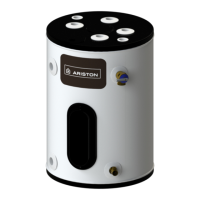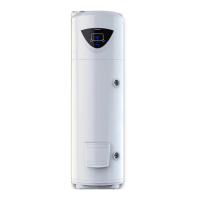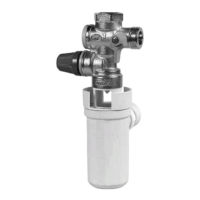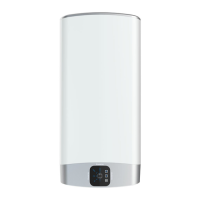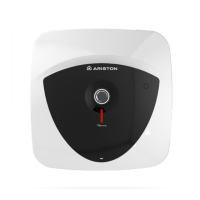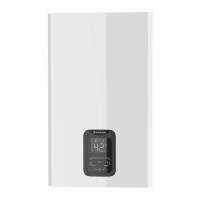Night-time power supply + permanent power
supply
➢ Heating element Night-time power supply
(exclusive or dual timer schedule).
➢ PROfessional TECH Permanent power
supply from a 230 V power supply line, separated
from the heating circuit line (Picture 15).
Picture 14 – PROfessional TECH Night-time power
supply + permanent power supply
IMPORTANT : ONLY FOR WATER HEATER TRI
PROFESSIONAL TECH MUST ALWAYS BE SUP-
PLIED WITH 230V OR 400V AC.
IN CASE OF 400V TRIPHASE NETWORK
SUPPLY : PROfessional TECH CONNECTION
BETWEEN 2 PHASES 400V.
IN CASE OF 230V TRIPHASE OR 230V MO-
NOPHASE NETWORK SUPPLY : PROFESSIO-
NAL TECH CONNECTION BETWEEN PHASES
230V (Follow electrical wiring described on electri-
cal wiring tag)
5. Preparing the boiler for operation
CAUTION: The appliance must never be
powered when it is empty, as this could damage
the electrical components.
➢ Fill the boiler by opening the water inlet valve
on the safety assembly.
➢ Open the hot water tap so that the air cushion
which has accumulated inside the water heater
may be expelled.
➢ Close the hot water tap as soon as water begins
to come out of it.
➢ Make sure the base and the attachment seals
are watertight. Where necessary, re-tighten the
bolts on the base (recommended between 7 and 10
Nm – dynamometric spanner) or the attachments.
➢ Switch the appliance on.
Never obstruct the opening of the safety
assembly.
op e r a t I o n
1. Introduction
1.1. User considerations
1. The installation of the water heater is the
responsibility of the purchaser.
2. Appliance preparation, maintenance work
and repair work may only be carried out by
qualified personnel. These individuals must act
in accordance with current national legislation. In
particular, all regulations relating to water heaters
must be fully observed.
3. The manufacturer shall not be held liable for any
damage caused by unprofessional or improper
installation, or by failure to comply with current
legislation or the instructions contained in this
booklet.
4. The end user is responsible for recycling the
appliance once it can no longer be used. For
further information, please consult the introduction
of this booklet 1.1. – Regulations relating to
transportation, storage and recycling.
5. For safety reasons, if away from the premises,
users must turn the hydraulic and electric circuits
off, as well as drain the appliance.
2. Operating advice
2.1. Temperature adjustment
We recommend the thermostat is not set to its
maximum position, in order to avoid limescale
build-up and prevent burns. It is nevertheless
essential to find a suitable compromise so as to
avoid bacterial proliferation while trying to prevent
the water heater from experiencing unnecessary
limescale build-up.
On the other hand, in order to prevent burns,
a suitable mixer should be used so that the
temperature does not exceed 50°C at any of the
drawing points. This is a compulsory regulation in
France.
When using a mixer at a drawing point,
we recommend that the temperature is
set to approximately 60ºC.
2.2. Maintenance
➢ Activate the tap and the valve on the safety
assembly every month so as to prevent limescale
from building up. Replace the safety assembly at
least once every 5 years or, if necessary, more
frequently.
➢ Empty the appliance annually (twice a year
if the water has been treated with a softening
agent) in order to:
1. check the condition of the magnesium anode;
2. remove all deposits inside the boiler.
Contact your installer.

